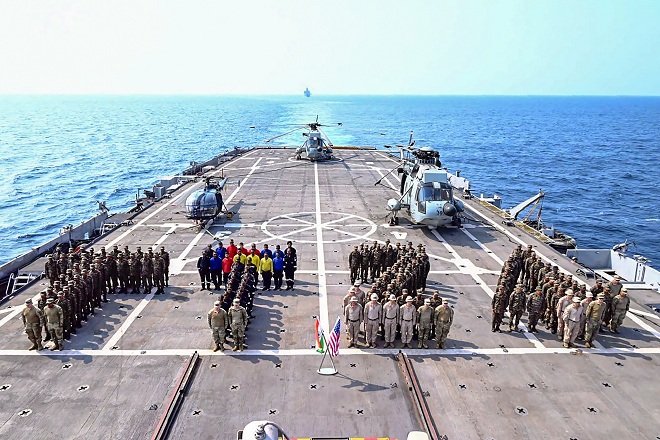
BENGALURU (PTI): After India's much hailed successful missions to the Moon and Mars that boosted its global standing in space, the next inter-planetary expedition to be launched is under discussion, according to ISRO.
"Currently, discussions are going on...on Venus, Mars, any planetary system," Indian Space Research Organisation Chairman A S Kiran Kumar told reporters on Wednesday, adding, an advisory committee headed by renowned space scientist U R Rao was looking into the issue.
Scripting space history, India had on September 24 last year placed its low-cost Mars spacecraft in orbit around the red planet, making it the first country to succeed in the very maiden attempt.
India's first lunar mission, Chandrayaan-1, was launched in 2008 and it helped confirm the existence of water on the Moon. A second lunar exploration mission - Chandrayaan-2, is being planned for launch during the next two to three years.
"We have an advisory committee on Science with Professor U R Rao as the Chairman, so that committee will decide what should be our priority, what planets we should be doing, what science studies we should be doing," Kumar said.
The ISRO Chairman's response came in reply to a question on media reports about ISRO's next inter-planetary mission to Venus in about two-and-a-half years.
Speaking to reporters on the sidelines of World Metrology Day here, he said, "Once they (the committee) come up with a finalised plan, we have to approve that..."
World Metrology Day was on Wednesday organised here by Metrology Society of India, Southern Region, in association with Central Manufacturing Technology Institute.
Kumar said ISRO was also in the process of indigenously developing atomic clock for its next generation navigation satellites. Currently, it is procuring atomic clocks from Europe.
"Atomic clock gives you accurate frequency and time measurement capability and stability; IRNSS satellites, each of those satellites carry an accurate clock and that clock should have stability....because using that clock you determine what is the distance between the satellite and the ground receiver...," he said.
"Right now the prototypes are getting developed; we have to make it into qualified version and then flight worthy version. Our next generation navigation satellite will carry our own atomic clock," he added.
Stating that ISRO has already launched four satellites in the series of seven satellites constellation to put in place the Indian Regional Navigation Satellite System (IRNSS), Kumar said, "remaining three satellites will be launched by March next year."
Speaking on communication satellite GSAT 6, he said, "it will give you a capability with very small hand held device to communicate, so like a small mobile you can communicate directly through the satellite to any other part, because the antenna size is very large, so it has got a signal grasping power much larger."
GSAT 6 is expected to be launched by July-August, he said, adding, "....it will be for strategic application."
When asked how ISRO will be addressing the shortage of transponders, Kumar said "what we have done is GSAT 16 was launched in December last year, there is a 15 (GSAT 15) which is going up in October this year with 48 transponders.
Similarly, 17 and 18 will be going up next year, so we have come up with a series of satellites carrying with...."
"Our end objective is to replace currently whatever is being provided through foreign leasing, replace them by India.
Today we are doing about 96 (transponders) in other than C-band and those 96 we want to replace in a matter of couple of years," he added.
Kumar also said the launch of ASTROSAT, the first dedicated Indian astronomy mission aimed at studying distant celestial objects, is slated for second half of this year.
Stating that ISRO has now completed the 635 second test on the indigenously developed cryogenic engine and the qualification activities are in progress, he said, "next year December is our target for GSLV Mark III (launch vehicle)."
Asked if there has been any failure on part of ISRO's satellite images or Meteorological department in registering about un-seasonal rains, Kumar said, "what the images give you is current information, what you need to do is based on a lot of studies and algorithms you should be able to project it into your future, this is the job of a Meteorologists."
"So they have to find out models, they have to come up with models which make use of large amount of information...and then use very high performance computer system and then predict," he added.
 Previous Article
Previous Article Next Article
Next Article













The Indian Air Force, in its flight trials evaluation report submitted before the Defence Ministry l..
view articleAn insight into the Medium Multi-Role Combat Aircraft competition...
view articleSky enthusiasts can now spot the International Space Station (ISS) commanded by Indian-American astr..
view article